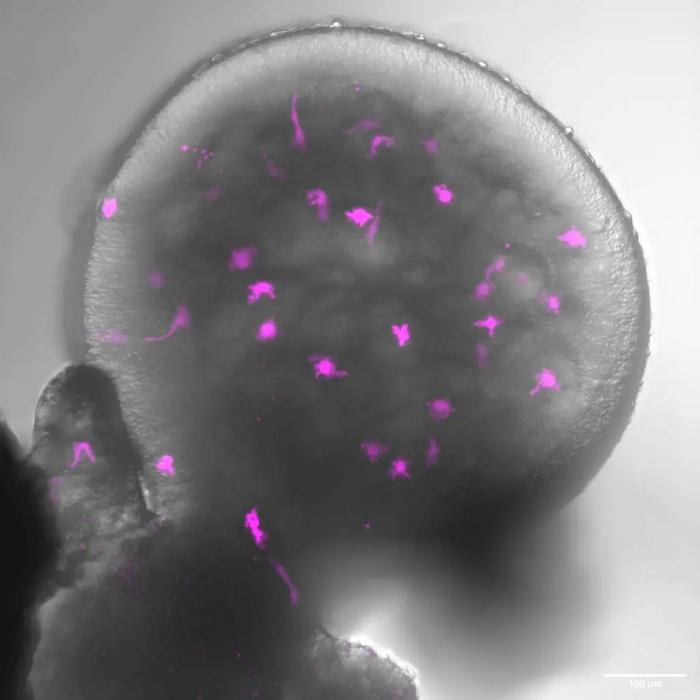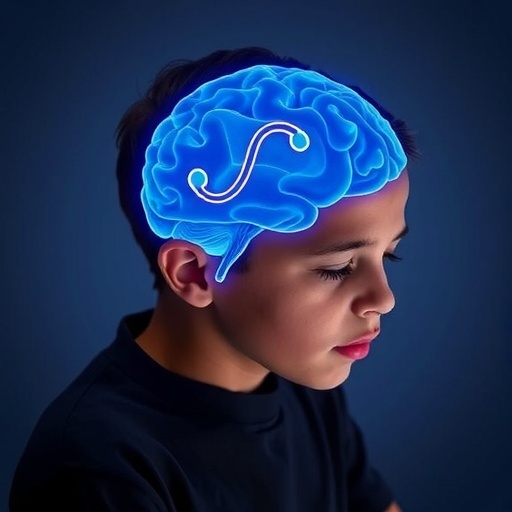
Organoids have emerged as transformative models in the fields of science and medicine, offering an innovative approach for disease modeling, drug testing, and the exploration of developmental processes. This emerging technology provides substantial insights into human biology, despite the inherent limitations of not being direct replicas of human organs. A pioneering effort by the Siegert group at the Institute of Science and Technology Austria (ISTA) has unveiled a groundbreaking organoid model that elucidates the developing nervous system’s interaction with viral infections, specifically focusing on Rubella. Given the serious implications these infections can have during pregnancy, this research presents potential advancements in pharmaceutical testing, particularly regarding drug safety for expectant mothers.
Microglia, a specialized subset of brain cells, perform essential functions akin to vigilant sentinels in the complex landscape of the central nervous system. They continuously survey the brain environment for pathogens and initiate anti-inflammatory responses to eliminate harmful entities. Moreover, these cells are integral in maintaining the balance and connectivity of neurons, supporting optimal brain function throughout adulthood. Understanding the dynamics of microglia during embryonic brain development is crucial, and Sandra Siegert’s research group is at the forefront of investigating their role in relation to neurons during these formative stages.
In their latest study, recently published in the Journal of Neuroinflammation, the Siegert group introduces an avant-garde brain organoid model that uniquely incorporates microglia. This pivotal development enables a more realistic simulation of inflammatory reactions and provides crucial insights into how these responses can be managed therapeutically. The presence of microglia in the organoid model not only adds complexity but also enhances the relevance of findings related to neuroinflammation and its treatment.
Rubella, commonly recognized as “German Measles,” manifests as mild illness in children and adults, characterized by a rash that spreads across the body. However, if pregnant individuals become infected with the virus, it poses significant risks, potentially leading to severe fetal brain malformations and an increased likelihood of developing schizophrenia in later life. The classification of Rubella as a “TORCH-infection” underlines the importance of studying its effects on embryonic brain development to mitigate long-term negative outcomes.
Researching the impact of viral infections on human brain development is essential. A team led by PhD student Verena Schmied, under the guidance of Professor Sandra Siegert, employed retinal organoids—established models with specific developmental trajectories and cellular architectures—to provide answers. These 3D structures, derived from reprogrammed human skin cells transformed into pluripotent stem cells, mimic key aspects of early fetal brain development, highlighting the intricacies of normal and abnormal brain trajectories.
Recent findings indicate that previous models lacked the incorporation of microglia, which typically appear early in development. The Siegert group’s innovation of including microglia within these retinal organoids has proven effective. By utilizing advanced imaging techniques, the integration of microglia was successfully confirmed, showcasing their distinctive bright pink appearance against the blue-stained neurons. This realization marked a significant milestone for the researchers, illustrating the complexity and functionality of the developed organoid system.
The research team subsequently sought to understand how their organoids responded to viral infections. They simulated the viral infection using a synthetic molecule that is recognized as a viral component, allowing a comparative analysis between organoids with and without microglia. The results revealed a noteworthy response; viral infection led to a disruption of microglial function, initiating an inflammatory response characterized by excessive neuron proliferation. This imbalance raises concerns about the proper establishment of neuronal circuits, potentially culminating in neurodevelopmental disorders.
The relevance of microglia in this model underscores the necessity of including these cells in organoid research. The inflammatory responses triggered by viral infections, which the microglia aim to address, have profound implications for neurodevelopment. Without microglia in the system, critical responses—such as the detrimental effects of inflammation on neuronal assembly—would go unnoticed. This realization expresses the significance of utilizing microglia-containing organoids in research, emphasizing their role in accurately reflecting inflammatory conditions.
In light of there being no specific antiviral treatment for Rubella, aside from anti-inflammatory medications like ibuprofen, the Siegert group explored the effects of ibuprofen on the developing brain within their organoid models. When administered to the virus-infected organoids, ibuprofen demonstrated a capacity to mitigate inflammatory changes, consequently restoring a normal neuronal environment. Notably, this protective effect was contingent upon the presence of microglia, indicating that the anti-inflammatory action of ibuprofen is profoundly influenced by these cells’ signaling pathways.
The findings of this research are pivotal, particularly in addressing the “off-label” use of common analgesics like ibuprofen and paracetamol in pregnant women. Despite the established safety of these medications for adults, their effects during pregnancy remain largely untested due to ethical, financial, and legal complexities surrounding clinical trials. The uncertainty surrounding their usage has heightened the importance of developing realistic organoid models that contribute to our understanding of drug effects on embryonic development.
Through encompassing microglia, the Siegert group’s innovative organoid model not only enhances our understanding of viral infections and inflammatory responses but also serves as a new platform for future investigations. Their work could lead to safer testing of medications for pregnant individuals, ultimately aiming to reduce risks associated with virulent diseases like Rubella. Thus, the study underscores the necessity of developing highly representative models in biomedical research that can better inform clinical practice and improve patient outcomes.
The implications of this research extend beyond immediate findings, potentially reshaping the landscape of drug testing and safety for expectant mothers. As the understanding of microglia and their roles in neurodevelopment continues to evolve, the future of organoid technology promises innovative pathways for exploring complex interactions in the human brain. The thorough investigation of these elements holds the potential to guide the development of safe therapeutic interventions for vulnerable populations, particularly pregnant women, thereby improving maternal and fetal health outcomes in an era of increasing medical complexity.
Subject of Research: Lab-produced tissue samples focusing on the integration of microglia within retinal organoids during viral infections.
Article Title: Microglia determine an immune-challenged environment and facilitate ibuprofen action in human retinal organoids.
News Publication Date: 3-Apr-2025.
Web References: DOI 10.1186/s12974-025-03366-x
References: Journal of Neuroinflammation.
Image Credits: © Schmied et al.
Keywords: Neuroscience, Glia, Microglia, Organoids, Drug Development, Human Brain Models, Pregnancy, Inflammation, Viral Infections.
Tags: central nervous system immune responsedrug testing advancements for expectant mothersembryonic brain development studiesinnovative models in medical researchinsights into human biology and organoidsinteractions between neurons and microgliamicroglia functions in brain healthnervous system development researchorganoid technology in disease modelingpharmaceutical safety testingRubella virus impact on pregnancytransformative approaches in neuroscience research





